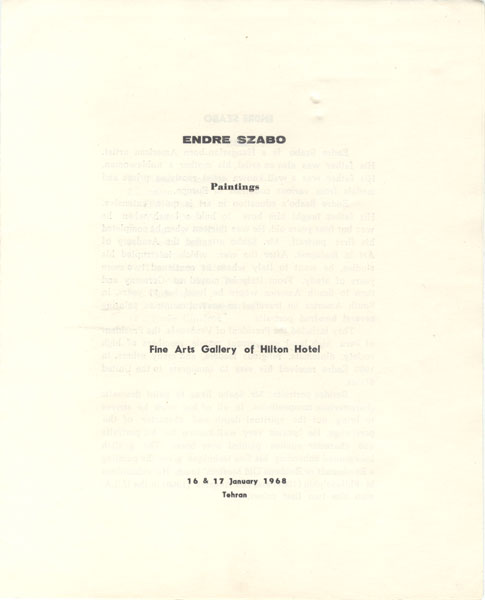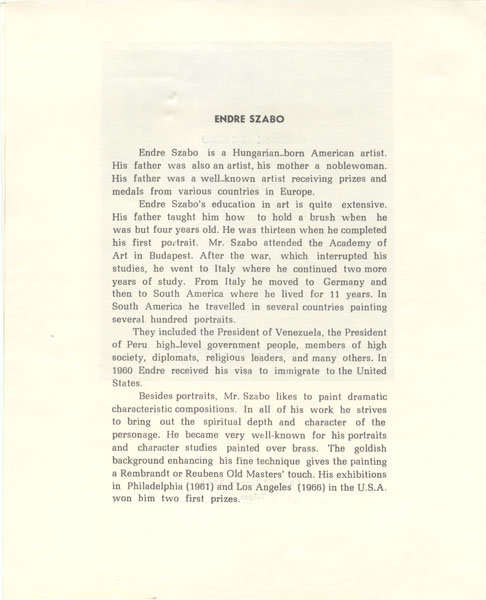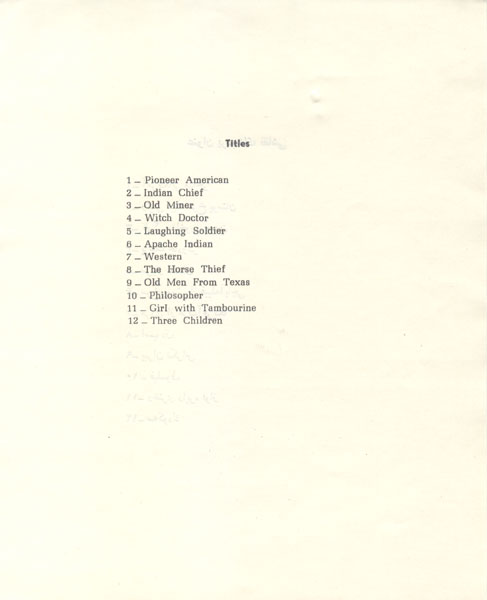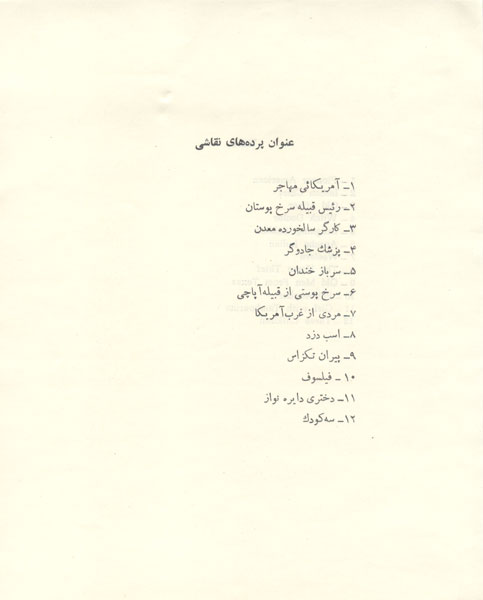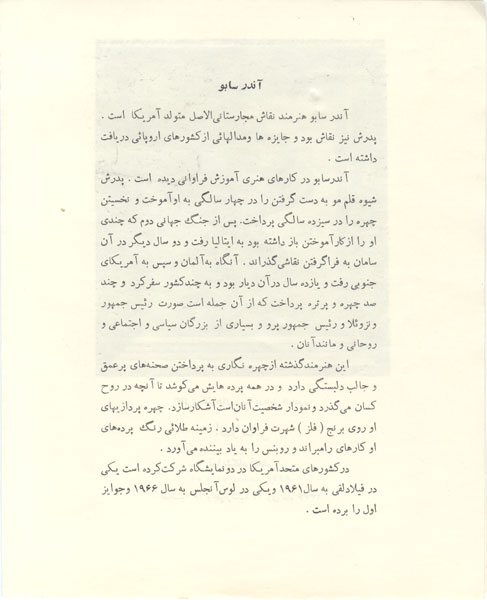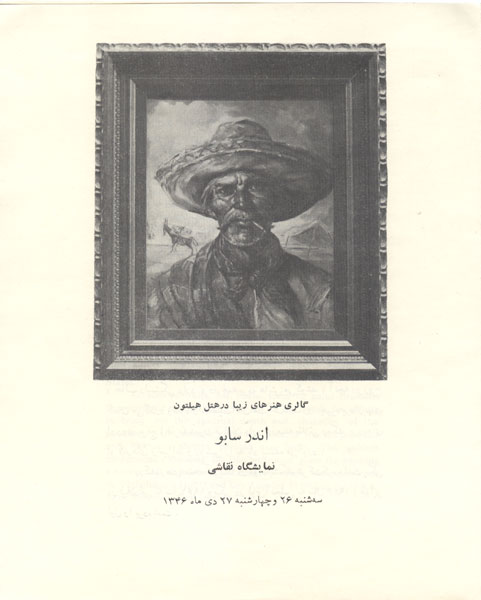One Man Art Exhibit in Tehran, Iran 1968
Fine Arts Gallery of Hilton Hotel, 16 & 17 January 1968, Tehran, Iran
On the Occasion of the Coronation of the Shah
The year was 1968. The United States and Iran enjoyed a friendly, mutually beneficial relationship. Iran and its people were enamored of Western culture. The Royal Family loved in particular, the American Old West. They collected great works of art from many famed early American artists for display in their opulent palaces and museums. The quality and reputation of their collection was known the world over.
Endre Szabo was given the honor of being asked to present a number of his works in a private showing at the Coronation of the Shah of Iran in 1968, at the invitation of the government of Iran. This was perhaps Mr. Szabo's most notable solo Art Exhibit. Twelve of his works were shown to the royal family and their guests.
Tehran Exhibit Pieces Currently Available
The Philosopher is the only piece currently available in lithograph form from this 1968 exhibit. The other 11 pieces that were shown are named in the brochure from the show, which is shown below.
The images and text below are from the brochure created for the original exhibit at the Tehran Hilton Holtel in 1968.
Program Text
Endre Szabo is a Hungarian-born American artist. His father was also an artist, his mother a noblewoman. His father was a well-known artist receiving prizes and medals from various countries in Europe.
Endre Szabo's Education in art is quite extensive. His father taught him how to hold a brush when he was but four years old. He was thirteen when he completed his first portrait. Mr. Szabo attended the Academy of Arts in Budapest. After the war, which interrupted his studies, he went to Italy where he continued two more years of study. From Italy he moved to Germany and then to South America where he lived for 11 years. in South America he traveled in several countries painting several hundred portraits.
They include the President of Venezuela, The President of Peru, high-level government people, members of high society, diplomats, religious leaders, and many others. In 1960 Endre received his visa to immigrate to the United States.
Besides portraits, Mr. Szabo likes to paint dramatic character compositions. In all of his work he strives to bring out the spiritual depth and character of the personage. He became very well known for his portraits and character studies painted over brass. The goldish background enhancing his fine technique gives the painting a Rembrandt or Rubens Old Masters' touch. His exhibitions in Philadelphia (1961) and Los Angeles (1966) in the U.S.A. won him two first prizes.
Titles
- Pioneer American
- Indian Chief
- Old Miner
- Witch Doctor
- Laughing Soldier
- Apache Indian
- Western
- The Horse Thief
- Old Men from Texas
- Philosopher
- Girl with Tambourine
- Three Children
